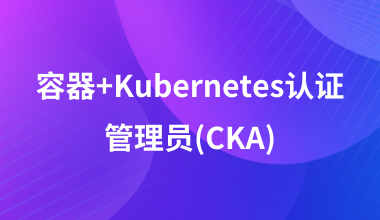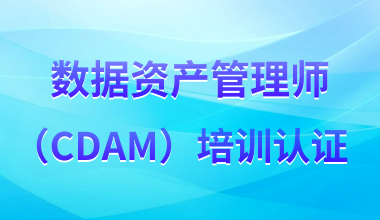
網絡工程師考點精要--第14章 計算機專業英語
2014-07-31 11:06:55 | 來源:中培企業IT培訓網
【命題要點】英語詞語是最基礎的部分,由于網絡技術是不斷更新的領域,不斷有新的思想涌現,也伴隨著新的詞匯出現。由于新出現的詞匯和網絡技術的專業性,往往造成理解上的偏差,因此需要應試者在基本了解網絡技術中英語專業詞匯的基礎上,將英語詞匯和漢語詞匯在功能和語義上相對應形成正確的理解。應試者需要準確掌握詞語的意義,區分同義詞在意義和使用上的差別;準確掌握名詞單、復數形式,以及由單、復數形式帶來不同語義的解釋;準確掌握關系代詞、關系副詞、聯系詞在語句乃至整個語篇中的邏輯意義。在詞匯復習中,尤其還需要注意專業詞匯的縮寫,這些縮寫往往是某些技術、設備或協議的代稱,在整個試題中是核心詞匯。復習時應多讀一些計算機網絡方面的英語時文。解題時,一般先考慮語義,后考慮語法。一、考題格式上午科目的71?75題一般是完形填空的形式。主要考查應試者結合計算機專業技術知識對全文綜合理解的程度,和聯系上下文的能力;應試者語法知識和對句法結構的辨識能力;應試者的詞匯量和詞匯運用能力。具體而言,完形填空主要考查應試者對語篇中句法、詞語和短語的把握能力,具有較強的測試性。每一個空處都要通過上下文進行綜合考慮,僅僅依靠一個單句往往無法確立正確選項。語篇的內容往往是對網絡技術中協議、通信過程、設備、最新技術等相關知識的描述,需要應試者對于這些內容有一定的了解。二、答題要領首先,通過首句或出現的核心詞匯來推斷全文的信息。短文的首句往往是主題句,或出現了核心詞匯,能為理解文章的大意和主要內容提供必要線索。一般首句還提供背景資料,因此要特別注意首句,抓住整個段落的綱要。其次,把握文章發展的基本線索。文章總是按照一定思路發展起來的,而不同的邏輯關系主要依靠使用邏輯連接詞來表達的,文章如果沒有出現內在的邏輯關系,就會出現語義不清,邏輯混亂。所以通過表示邏輯關系的詞匯把握文章發展的基本線索是至關重要的。借助語法知識和專業背景知識確定正確的詞匯選項。計算機專業英語詞匯的考查在試題中占一定比例,詞匯選項的設計和文章難度的制定與語法都息息相關。應試者務必借助語法知識和專業背景知識來確定正確的詞匯選項。同時注意填入的詞匯和文中句子的結構要求相一致。三、答題步驟第一步,通讀全文。完形填空是考查全面理解內容的基礎上運用語言的能力,由于試題篇幅較短,完全有時間利用通讀對全文內容有一個基本的了解。應試者要快速閱讀段落,把握基本觀點,通讀時以瀏覽為主,可以忽略細節。第二步,復讀答題。在通讀的基礎上,應試者最好能立即復讀,并結合選項,從語法結構、語義、詞義、固定搭配等方面結合專業知識來考慮選項。選定之后,還需要回讀。在整個答題過程中,切記全文的整體意義,保持思路的連貫性,從而做出最合適的正確選擇。第三步,重讀檢查。在確定了所有選項以后,一定還要重讀全文,檢查并核實每個選項在正篇文章中沒有造成語義、結構、邏輯等方面的差錯,確保短文是一個內容連貫、層次清晰、中心思想突出的整體。四、常用詞匯下面列出常用的計算機網絡技術基本術語,供考生復習時參考。accept 接受 access control 訪問控制acknowledgement (ACK)確認adaptive routing 自適應路由address field 地址字段amplitude 振幅analog signal 模擬信號anonymous FTP 匿名 FTPapplication layer 應用層asynchronous 異步backbone 主干bandwidth 帶寬baseband mode 基帶模式baud rate波特率binary exponential backoff algorithm 二進制指數退避算法bit-oriented protocol 面向比特的協議 block check character 塊校驗字符Border Gateway Protocol 邊界網關協議bridge網橋bridge protocol data unit 網橋協議數據單元broadcast address 廣播地址 Brouter橋路器buffering 緩沖cable modem電纜調制解調器Caesar cipher凱撒密碼 call confirmation 呼叫證實call request呼叫請求Carrier Sense Multiple Access (CSMA)載波偵聽多路訪問Carrier Sense Multiple Access with Collision Detection (CSMA/CD)帶沖突檢測的載波幀聽多路訪問carrier signal載波信號 Cell信元channel 信道 Checksum校驗和Choke packet抑制分組 ciphertext 密文circuit switching 電路交換 client客戶client/server model客戶端/服務器模式 coaxial cable 同軸電纜code編碼 common bus topology 公共總線拓撲結構Common Gateway公共網關接口 Common Management Information Protocol通用管理信息協議communications subnet 通信子網 compact disc 光盤compression 壓縮 congestion 擁塞connection 連接contention 競爭contention protocol 競爭協議control bits 控制位control character 控制字符Data Circuit-Terminating Equipement (DCE)數據電路端接設備Data Encryption Standard (DES)數據加密標準data link layer數據鏈路層 datagram數據報decryption 解密 demodulation 解調destination address 目的地址 differential encoding 差分編碼digital signal 數字信號 digital signature 數字簽名directory service 目錄服務 domain 域Domain Name System 域名系統 echo reply回送響應echo request回送請求 electronic mail (email)電子郵件encryption 加密 encryption key 密鑰error control 差錯控制 error correction 差錯校正error detection 差錯檢測Ethernet以太網even parity 偶校驗 exterior gateway protocol 外部網關協議fiber distributed data interface 光纖分布式數據接口file server文件服務器file transfer protocol 文件傳輸協議filter濾波器flow control流量控制fragment 段fragmentation 分段frame 幀 frequency 頻率frequency-division multiplexing 頻分多路復用full duplex 全雙工 gateway 網關graded-index multimode fiber 級率多模光纖hacker黑客half duplex 半雙工Hamming code 海明碼handshaking 握手High-level Data Link Control (HDLC)高級數據鏈路控制協議host主機hypertext transfer protocol (HTTP)超文本傳送infrared light 紅外線 Internet因特網Internet Control Message Protocol (ICMP) 網際控制報文協議Internet Protocol 網際協議 Internet worm因特網蠕蟲key exchange密鑰交換 laser激光local area network (LAN)局域網local exchange本地交換局local loop本地回路Manchester code曼徹斯特編碼medium access control (MAC)媒體訪問控制message handling 報文處理message transfer protocol 報文傳送協議modem 調制解調器modulation 調制multiplexer 多路復用器 network 網絡Network Control Protocol 網絡控制協議 network interface card (NIC)網絡接口卡network layer protocol 網絡層協議 network topology網絡拓撲結構network virtual terminal 網絡虛擬終端 Non-persistent CSMA 非堅持CSMANyquist theorem 奈奎斯特定理 octet字節odd parity奇校驗 Open Systems Interconnect (OSI)開放系統互連packet分組packet header 分組頭packet-switched network分組交換網絡parity bit奇偶校驗位path通路path control通路控制physical layer 物理層 pixels像素plaintext 明文 prefix前綴presentation layer 表示層 protocol 協議pulse amplitude modulation 脈沖幅度調制pulse code modulation 脈碼調制radio 無線電收發機receiving window 接收窗口remote logins 遠程登錄 repeater 中繼器reply 應答root bridge 根網橋root port 根端口route 路由router 路由器 routing algorithm 路由算法Routing Information Protocol路由信息協議routing table 路由表sampling frequency 采樣率satellite人造衛星script腳本 security 安全 segment 段sequence number 序列號 serial transmission 串行傳輸server服務器 session 會話session control 會話控 session layer 會話層signal-to-noise ratio 信噪比 simplex 單工Simple Mail Transfer Protocol (SMTP)簡單 郵件傳輸協議single-mode fiber 單模光纖sliding window 滑動窗口協議socket套接字source address 源地址source quench 源抑制spanning tree algorithm 生成樹算法start bit起始位start of frame delimiter 幀起始定界符static routing 靜態路由stop bit 停止位subnet子網 successor 后繼switch交換機SYN character同步字符Synchronous 同步Synchronous Optical Network (SONET)同步光纖網telegraph 電報 terminal adapter終端適配器three-way handshake 三次握手 time exceeded 超時time to live 生存期 time-division 時分multiplexing 多路復用 timestamp reply 時戳應答timestamp request 時戳請求 token令牌 transceiver 收發器transmission rate 傳輸速率transparent bridge 透明網橋transport layer 運輸層 twisted pair 雙絞線tunneling 隧道Uniform Resource Locator (URL)統一資源定位器User Datagram Protocol (UDP)用戶數據報協議 verification 驗證virutalcircuit (route) 虛電路(路由) virus病毒wide area network (WAN)廣域網 window 窗口World Wide Web 萬維網 worm蠕蟲【試題14-1】 2013年5月真題71~75Traditional IP packet forwarding analyzes the (71) IP address contained in the network layer header of each packet as the packet travels from its source to its final destination. A router analyzes the destination IP address independently at each hop in the network. Dynamic (72) protocols or static configuration builds the database needed to analyze the destination IP address (the routing table). The process of implementing traditional IP routing also is called hop-by-hop destination-based (73) routing. Although successful , and obviously widely deployed, certain restrictions, which have been realized for some time, exist for this method of packet forwarding that diminish its (74) .New techniques are therefore required to address and expand liie functionality of an IP-based network infrastructure. This first chapter concentrate on identifying these restrictions and presents a new architecture, known as multipleprotocol (75) switching, that provides solutions to some of these restrictions.(71) A.datagram B.destinationC.connectionD.service(72)A.routing B.forwarding C.transmissionD.management(73)A.anycast B.multicast C.broadcast D.unicast(74)A.reliabilityB.flexibilityC.stability D.capability(75)A.const B.cast C.mark D.label解析:當數據包從其來源到其最終目的地址時,傳統的IP報文轉發分析包含在每一個數據包的網絡層 報頭的目的IP地址。路由器獨立地分析網絡中的每一跳目標IP地址。動態路由協議或靜態配置生成所需的數 據庫來分析目標IP地址(路由表)。傳統的IP路由實現的過程也被稱為基于逐跳目的地的單播路由。雖然成功地廣泛釆用,但是一些已經實現一段時間的限制仍存在,此方法存在報文的轉發減少其靈活性。因此,需要新的技術,以處理和擴展一個基于IP的網絡基礎設施的功能。第一章著重識別這些限制,并提出了一種新的架構,被稱為多協議標簽交換,來提供解決這些限制的方法。【答案:(71) B、(72) A、(73) D、(74) B、(75) D】【試題14-2】 2013年11月真題71~75The de facto standard application program interface (API) for TCP/IP applications is the "sockets" interface. Although this API was developed for (71) in the early 1980s. it has also been implemented on a wide variety of non-Unix systems. TCP/EP (72) written using the sockets API have in the past enjoyed a high degree of portability and we would like the same (73) with IPv6 applications. But changes are required to the sockets API to support IPv6 and this memo describes these changes. These include a new socket address structure to carry IPv6 (74) ,new address conversion functions, and some new socket options. These extensions are designed to provide Access to the basic IPv6 features required by TCP and UDP applications, including multicasting,while introducing a minimum of change into the system and providing complete (75) for existing IPv4.(71) A.Windows B.Linux C.Unix D.DoS(72) A.applications B.networks C.protocols D.systems(73) A.portabilityB.availabilityC.capabilityD.reliability(74) A.connections B.protocols C.networks D.addresses(75) A.availability B.compatibility C.capability D.reliability解析:事實上的標準應用程序接口(API),用于TCP/ IP應用程序是“套接字”界面。雖然這個API 是在80年代初為Unix開發的。它也被在各種各樣的非Unix系統的實施。使用套接字API編寫的TCP/. IP應用程 序在過去享有的可移植性程度高,我們想同樣的便攜性與IPv6應用。但改變是必需的套接字API,支持IPv6和 本備忘錄描述了這些變化。這包括一個新的套接字地址結構來進行IPv6地址,新地址轉換功能,和一些新的套接字選項。這些擴展的目的是提供訪問IPv6基本功能由TCP和UDP應用程序,包括多播要求,同時引入一個 最小變化到系統中,并提供給現有的IPv4應用程序完全兼容。【答案:(71) C、(72) A、(73) A、(74) D、(75) B】【試題14-3】 2012年5月真題71~75The TCP protocolis a (71) layer protocol. Each connection connects two TCPs that may be just one physical network apart or located on opposite sides of the globe. In other words, each connection creates a (72) witha length that may be totally different from another path created by another connection. This means that TCP cannot use the same retransmission time for all connections. Selecting a fixed retransmission time for all connections can result in serious consequences. If the retransmission time does not allow enough time for a (73) to reach the destination and an acknowledgment to reach the source, it can result in retransmission of segments that are still on the way. Conversely, if the retransmission time is longer than necessary for a short path, it may result in delay for the application programs .Even for one single connection, the retransmission time should not be fixed.A connection may be able to send segments and receive (74) faster during nontraffic period than during congested periods. TCP uses the dynamic retransmission time,a transmission time is different for each connection and which may be changed during the same connection. Retransmission time can be made (75) by basing it on the round-trip time (RTT). Several formulas are used for this purpose.(71) A.physical B.network C.transport D.application(72) A.path B.window C. response D.process(73) A.process B.segment C.program D.user(74) A.connectionsB.requestsC. acknowledgmentsD.datagrams(75) A.long B.short C.fixed D.dynamic解析:TCP是一種傳輸層協議,每個TCP連接都連接著兩個TCP,這兩個TCP可能是在一個物理網絡里, 但是是分開的或者位于全局網絡的對立面。換句話說,每個連接創建一個路徑的長度可能完全不同于由另外一個連接創建的路徑。這意味著TCP不能為所有的連接使用相同的轉發時間。為所有的連接選擇一個固定的 轉發時間可能會導致嚴重的后果。如果這個轉發時間并不為一個段提供足夠的時間去到達目的地以確認獲取 來源,將導致段轉發的部分仍在路上。相反,如果轉發時間超過了必要的短路徑,它可能會導致延遲的應用程序,甚至一個單獨的連接,轉發時間也應該是不固定的,相比于擁擠的時期,一個連接在不擁擠的時期可 能能夠更快地發送和接收確認。TCP使用動態轉發時間,每個連接的傳輸時間是不同的,而且可能在相同的連接中變化。轉發時間可能是動態的基于往返時間,有幾個準則用于這一目的。【答案:(71) C; (72) A; (73) B; (74) C; (75) D】【試題14-4】 2012年11月真題71~75Let us now see how randomization is done when a collision occurs.After a (71) , time is divided into discrete slots whose length is equal to the worst-case round-trip propagation time on the ether (2t) .To accommodate the longest path allowed by Ethernet, the slot tome has been set tO 512 bit times,or 51.2(isec.After the first collision,each station waits either 0 or 1 (72) times before trying again.If two stations collide and each one picks the same random number,they will collide again.After the second collision,each one picks either 0,l,2,or3 at random and waits that number of slot times.If a third collision occurs (the probability of this happening is 0.25) ,then the next time the number of slots to wait is chosen at (73) from the interval 0 to 23-l.In general,after i collisions,a random number between 0 and 2*-l is chosen,and that number of slots is skipped.However, after ten collisions have been reached,the randomization (74) is frozen at a maximum of 1023 slots.After 16 collisions,the controller throws in the towel and reports failure back to the computer.Further recovery is up to (75) layers.(71) A.datagramB.collisionC.connectionD.service(72)A.slot B.switch C.process D.fire(73)A.rest B.randomC.once D.odds(74)A.unicastB.multicastC.broadcastD.interval(75)A.local B.next C.higher D.lower解析:現在讓我們觀察沖突發生時如何做隨機處理。沖突發生后,時間被劃分成離散的長度,等于最壞的往返傳播時間的時槽。為了容納以太網允許的最長路徑,沖突時槽縮小為5.12μs。第一次沖突后,每個站在再次嘗試前需要等待0或1時槽。如果每一站發生沖突,且每一個挑選相同的隨機數,它們將再次發生沖突,第2次沖突之后,每一站隨機選擇0、1、2或3,即等待時槽的個數。如果第3次沖突發生(發生的概率為0.25),則下次時槽的等待數量都是在0?23-1之間隨機挑選的。總體來說,第i次沖突后,將在0~2i-1:之間挑選隨機數,而且那個時槽數是被略過的。然而,當沖突次數達到10次,隨機間隔被鎖定在最高1023時槽。當發生16次沖突后,控制器丟棄報告而不再返回計算機。進一步恢復已經達到更高的層次。【答案:(71) B; (72) A; (73) B; (74) D; (75) C】【試題14-5】 2011年5月真題71-75Border Gateway Protocol(BGP) is inter-autonomous system (71) protocol. BGP is based on a routing method called path vector routing. Distance vector routing is not a good candidate for inter-autonomous system routing because there are occasions on which the route with the smallest (72) count is not the preferred route. For example, we may not want a packet through an autonomous system that is not secure even though it is shortest route. Also, distance vector routing is unstable due to the fact that the routers announce only the number of hop counts to the destination without defining the path that leads to that (73) . A router that receives a distance vector advertisement packet may be fooled if the shortest path is actually calculated through the receiving router itself. Link (74) routing is also not a good candidate for inner-autonomous system routing because an internet is usually too big for this routing method. To use link state routing for the whole internet would require each router to have a huge link state database. It would also take a long time for each router to calculate its routing (75) using the Dijkstra algorism.(71) A.routingB.switchingC.transmittingD.receiving(72) A.path B.hop C.route D.packet(73) A.connection B.window C.source D.destination(74) A.status B.search C.state D.research(75) A.table B.state C.metric D.cost參考譯文:邊界網關協議(BGP)是自治系統間的路由協議。BGP是基于路由的方法稱為距離矢量路 由。距離矢量路由是自己系統路由的很好的候選者,因為跨自治系統路由場合上最小的跳數的路由不一定是最合適的路由。例如,我們可能不希望通過一個自治系統不安全的數據包,即使它是最短的路線。此外,距離矢量路由是不穩定的,路由器只宣布到目的地的跳數,但不指出到達目的地的路徑。實際上,如果是通過接收路由器本身計算的最短路徑,接收距離矢量通告報文的路由器可能被愚弄。鏈路狀態路由在跨自治系統中也不是一個好的候選者,因為對于這種方法互聯網是通常過大。要對整個互聯網使用鏈接狀態路由,就需要每個路由器有一個巨大的鏈路狀態數據庫。它也需要每個路由器用很長的時間來使用的Dijkstra算法計算自己的路由表。【答案:(71) A; (72) B; (73) D; (74) C; (75) A】【試題14-6】 2011年11月真題71~75A transport layer protocol usually has several responsibilties.One is to create a process-to-process communication UDP uses (71) numbers to accomplish this.Another responsibility is to provide control mechanisms at the transport level UDP does this task at a very minimal level.There is no flow control mechanism and there is no (72)for received packet.UDP,however,does provide error control to some extent.If UDP detects an error in the received packet,it will silently drop it.The transport layer also provides a connection mechanism for the processes.The (73) must be able to send streams of data to the transport layer.It is the responsibility of the transport layer at (74) station to make the connection with the receiver chop the stream into transportable units,number them,and send them one by one.it is the responsibility of the transport layer at the receiving end to wait until all the different units belonging to the same process have arrived,check and pass those that are (75) freehand deliver them to the receiving process as a stream.(71) A.hop B.port C.route D.packet(72) A.connectionB.windowC.acknowledgementD.destination(73) A.jobs B.processes C.programs D.users(74) A.sending B.routing C.switching D.receiving(75) A.call B.state C.cost D.error參考譯文:傳輸層協議通常有多種責任。一個是創建進程間通信,UDP使用端口數來完成這項工作。另一個是在傳輸層提供控制機制。UDP以一個最低的級別完成這項工作,無流控制機制和接收包的應答機制。但是,UDP在一些范圍上提供了差錯控制。如果UDP在接收包中檢測到了錯誤,它將靜靜地丟棄它。傳輸層同樣為進程提供了一個連接機制。這個進程必須能發送數據流到傳輸層。而在發送站傳輸層的責任就是與接收站建立連接,將流放入傳輸單元,并編號,然后一個接一個地發送。接收站傳輸層的責任是等待一個相同進程中的不同的數據單元的到達,并且檢查它們,將錯誤單元丟棄,并且以流的形式傳遞到接收進程中。【答案:(71) B; (72) C; (73) B; (74) A; (75) D】【試題14-7】 2010年5月真題71~75Although a given waveform may contain frequencies over a very broad range, as a practical matter any transmission system will be able to accommodate only a limited band of (71) . This, in turn, limits the data rate that can be carried on the transmission (72) . A square wave has an infinite number of frequency components andhence an infinite (73) . However, the peak amplitude of the kth frequency component, kf, is only 1/k, so most of the (74) in this waveform is in the first few frequency components. In general, any digital waveform will have (75) bandwidth. If we attempt to transmit this waveform as a signal over any medium, the transmission system will limit the bandwidth that can be transmitted.(71) A.frequencies B.connections C.diagrams D.resources(72) A.procedures B.function C.route D.medium(73) A.source B.bandwidth C.energy D.cost(74) A.frequency B.nergy C.amplitude D.phase(75) A.small B.limited C.infinite D.finite參考譯文:雖然一個給定的波形包含了很寬的頻率范圍,但任何實際的傳輸系統只能通過有限的頻率。這樣,就限制了傳輸介質可以承載的數據速率。一個方波包含了無限多的頻率成分,因而也具有無限的帶寬。然而,第k個頻率成分的峰值幅kf只是1/k,所以波形的大部分能量只是包含在前面的少數頻率成分中。一般來說,任何數字波形都有無限帶寬。如果我們試圖在某種介質上傳輸這種波形信號,則傳輸系統實際上會限制可以發送的帶寬。【答案:(71) A; (72) D; (73) B; (74) B; (75) C】【試題14-8】 2010年11月真題71~75The metric assigned to each network depends on the type of protocol.Some simple protocol, like RIP, treats each network as equals.The (71) of passing through each network is the same;it is one (72) count.So if a packet passes through 10 network to reach the destination, the total cost is 10 hop counts.Other protocols, such as OSPF, allow the administrator to assign a cost for passing through a network based on the type of service required.A (73)through a network can have different costs (metrics) .For example, if maximum (74) is the desired type of service, a satellite link has 狂 lower metric than a fiber-optic line.On the other hand, if minimum (75) is the desired type of service, a fiber-optic line has a lower metric than a satellite line.OSPF allow each router to have several routing table based on the required type of service.(71) A.numberB.connectionC.diagramD.cost(72) A.processB.hop C.route D.flow(73) A.flow B.window C.route D.cost(74) A.packet B.throughput C.error D.number(75) A.delay B.stream C.packet D.cost參考譯文;每個網絡釆用的度量標準依賴于協議類型。對于簡單的協議,如RIP,將每個網絡同等對待。 通過每個網絡的代價都是一跳。因此,如果一個分組通過10個網絡后到達目的地,則總的代價為10個其他協議,如OSPF,允許網絡管理員基于服務為通過的網絡設置代價。因此,通過一個網絡的路由可能有不同的代價(度量標準)。例如,若期望服務類型是最大吞吐量,則衛星鏈路比光纖線路的度量小。如果期望的服務類型是最小時延,則光纖線路的度量小于衛星鏈路。OSPF允許每個路由器有幾張基于服務類型的路由表。【答案:(71) D; (72) B; (73) C; (74) B; (75) A】
標簽:
網絡工程師考點
相關閱讀
- 網絡工程師考點精要--第9章 網絡安全08-05
- 網絡工程師考點精要--第2章 操作系統08-01
- 網絡工程師考點精要--第1章 計算機的組成與結構08-01
- 網絡工程師考點精要--第7章 局域網和城域網07-30
- 網絡工程師考點精要--第10章 網絡操作系統與應用服務器配置07-31
近期開班
-

國家軟考高級-系統規劃與管理師
8月14-31日 在線咨詢 -

國家軟考高級-系統架構設計師
8月18-02日 在線咨詢 -

容器+Kubernetes認證管理員(CKA)
8月20-30日 在線咨詢 -

軟件工程造價師認證
8月20-22日 在線咨詢 -

CDSP數據安全認證專家
8月22-23日 在線咨詢 -

人工智能實踐項目案例分析與實戰應用
8月24-27日 在線咨詢 -

DAMA國際數據管理專業人士CDMP認證&DAMA中國數據治理工程師CDGA認證
8月25-27日 在線咨詢 -

數據資產管理師CDAM認證
8月26-28日 在線咨詢 -

國家注冊信息安全專業人員CISP認證
8月27-31日 在線咨詢 -

國家注冊信息安全專業人員CISP-PTE滲透測試工程師認證
8月27-31日 在線咨詢 -

ITSS-IT服務項目經理認證
8月27-29日 在線咨詢 -

ITSS-IT服務工程師認證
8月27-28日 在線咨詢 -

DAMA中國數據治理專家CDGP認證
8月28-30日 在線咨詢 -

網絡安全技術與攻防實戰
8月28-30日 在線咨詢 -

產品全生命周期管理運營與增長實戰
8月28-30日 在線咨詢
-
全國報名服務熱線
 400-626-7377
400-626-7377
-
熱門課程咨詢
 在線咨詢
在線咨詢
-
微信公眾號
 微信號:zpitedu
微信號:zpitedu


 400-626-7377
400-626-7377